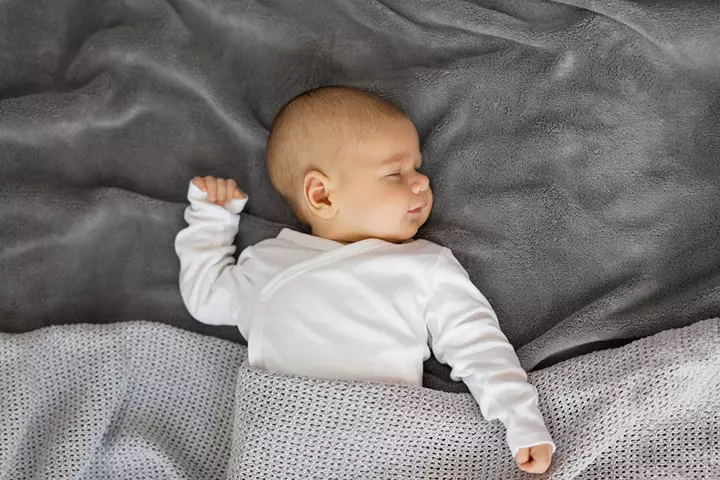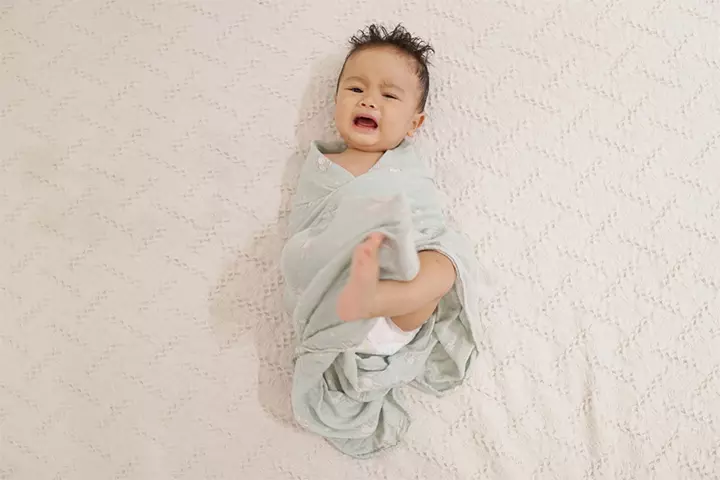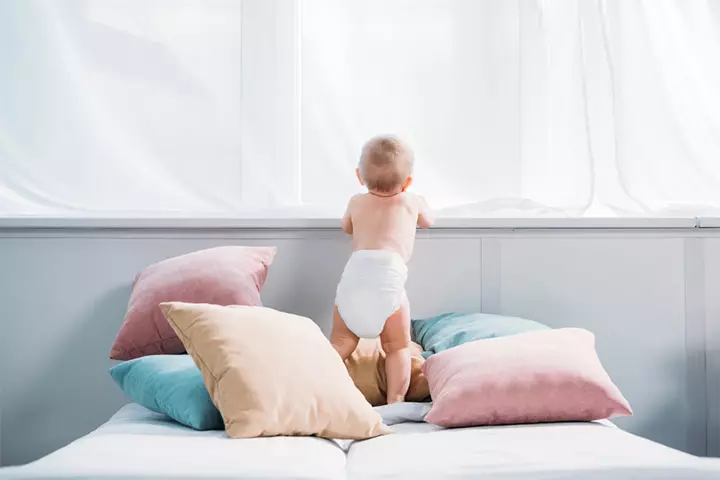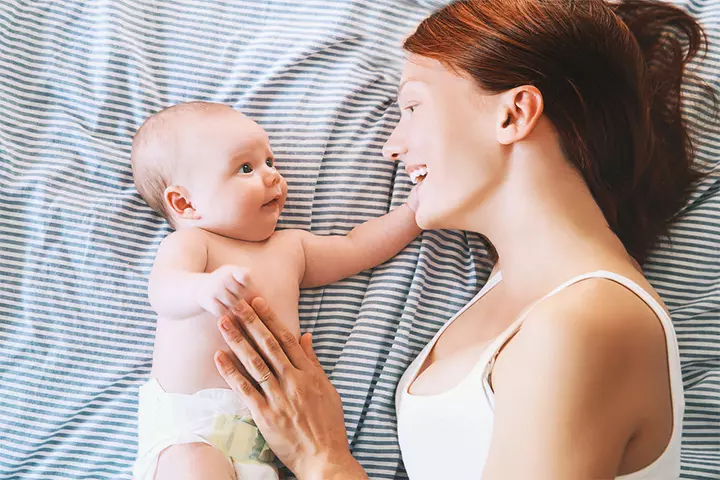
Image: Shutterstock
Babies need to be under round-the-clock supervision, given how dependent they are on you for their safety and care. Especially during the night, you need to ensure that your baby has been put to bed with all the necessary safety measures in place. Medical care experts believe that babies should not be sleeping with their parents, and they should sleep in cribs, bassinets, or cradles. However, for numerous reasons, some parents prefer co-sleeping (1).
If you are one of those parents who have opted for co-sleeping with your baby, then there are a few safety tips that you should follow and not compromise on. In doing so, you will keep your baby safe and prevent any untoward incidents or mishaps. Read on for seven co-sleeping safety tips that you cannot afford to ignore:
1. Back Sleeping Is The Best
Image: Shutterstock
Every major healthcare organization, such as the Centers for Disease Control and Prevention (CDC) and the American Academy of Pediatrics (AAP), has concluded that back sleeping is the best and safest way to put your baby to sleep. It has been observed that babies who sleep on their backs were at a lesser risk of Sudden Infant Death Syndrome than babies who did not sleep on their backs. Irrespective of where your baby sleeps — in your bed or their cribs, ensure that they are in a supine position (2).
2. Avoid Smoking And Drinking Before Bed
Image: Shutterstock
If you are co-sleeping with your baby at night, refrain from smoking or consuming alcohol before hitting the sack. Several infant-related deaths have been associated with smoking or drinking in one or both parents. By smoking, you expose your child to toxins that can cause respiratory ailments, infections, and Sudden Infant Death Syndrome. Consumption of alcohol is not recommended when co-sleeping simply because there are high chances of you rolling over or suffocating your child. This can be extremely dangerous and prove to be fatal (3).
3. Do Not Overdress Them
Image: Shutterstock
We often come across babies wrapped in swaddling clothes, covered and cocooned in every possible way. However, you do not have to overdress your baby, especially at night. The American Academy of Pediatrics suggests that babies only need one additional layer of clothing more than an adult requires. A onesie with socks and gloves should suffice, and in the winter, you can swaddle your baby with a swaddling wrap cloth. Overdressing them can lead to overheating, which is again one of the causes of Sudden Infant Death (4).
4. Lookout For Gaps And Wires
Image: Shutterstock
If your baby sleeps on the side of the bed towards the wall, watch out for electric sockets and wires. Your baby may end up touching these wires or put their fingers into plugs. Also, watch out for any gaps or shelves between your bed and the wall — your baby can get wedged between these spaces. This holds true also for babies who sleep in cribs. Ideally, a crib should be away from wires, curtains, and any item that can harm, choke, or electrocute a child (5).
5. No Bedding Or Toys Strewn On The Bed
Image: Shutterstock
It is best to ensure that the bed is in a clutter-free environment. So, make sure that there are no toys, books, bottles, or gadgets on the bed. Also, ensure that the mattress sheet is securely tucked in, and the blankets you use do not cover the child, especially over the head. It is also best to keep your hair tied and remove any teething necklace that may be around the bed (6).
6. Never Place Them In Between
Image: Shutterstock
You might think that the baby is safest between their parents. After all, this way, they will not fall off the bed, and both parents will be able to take care of their baby, right? Wrong. Placing your baby in between you and your partner puts them at risk of overheating, suffocation, and SIDS. It is better to place your little one on the side of one parent, preferably in such a way that your baby is towards the wall (7).
7. Extremely Soft Beds Are A Strict “No”
Image: Shutterstock
Make sure that the mattress you and your baby lie on is firm and sturdy. Soft and bouncy mattresses can lead to suffocation and Sudden Infant Death. Do not use a waterbed for your baby, even if they sleep on it alone or with you. Babies can easily roll over onto their stomachs or get sucked into the mattress, all of which can be dangerous (8).
The choice you’ve made to co-sleep with your child is a personal one, but when it comes to the necessary safety precautions, you have no choice but to follow them. Co-sleeping is a fairly common practice, and with these safety tips, you can keep your baby safe. What are some of the safety measures that you take while co-sleeping? Share them with us in the comments below!



















